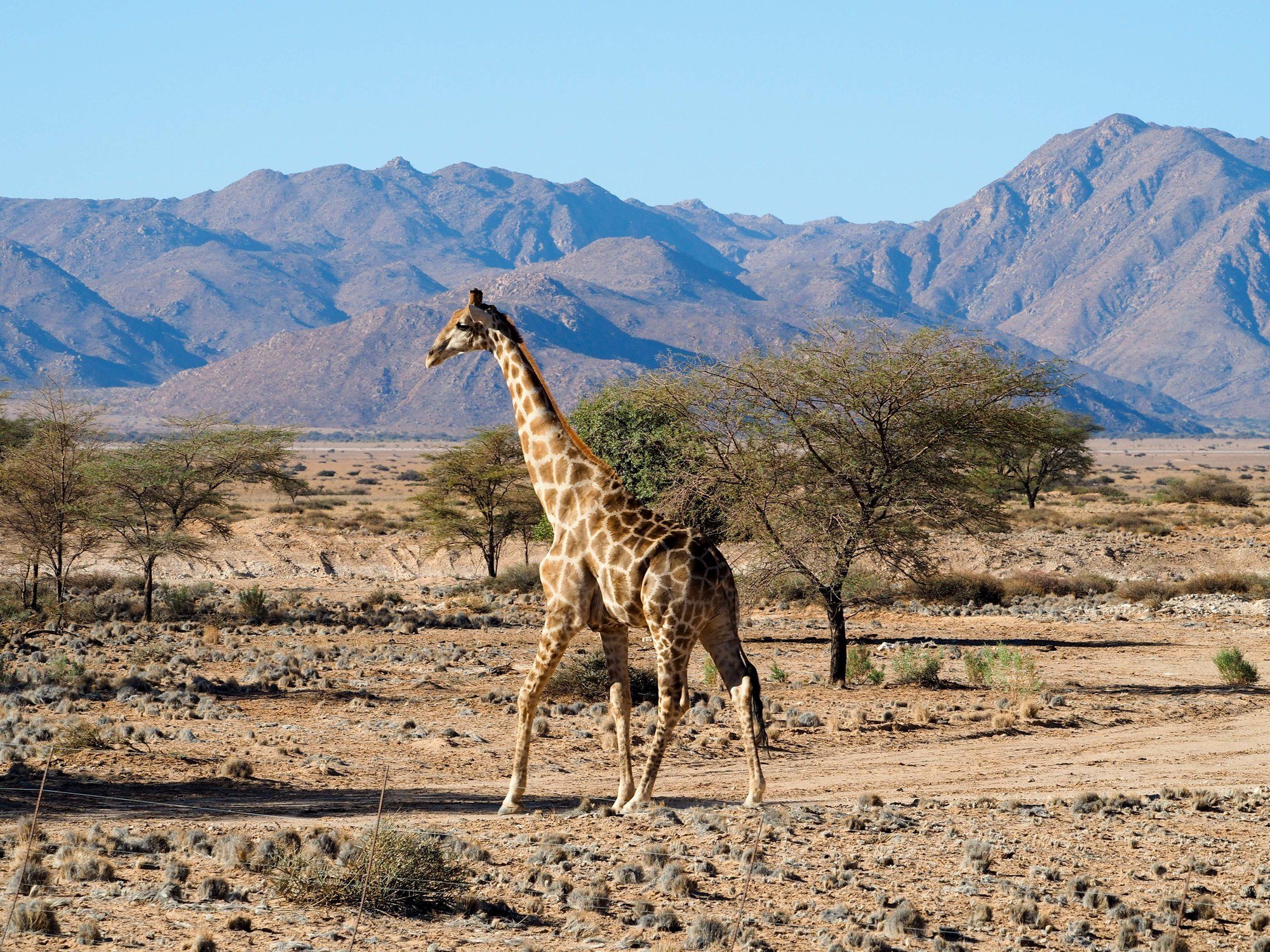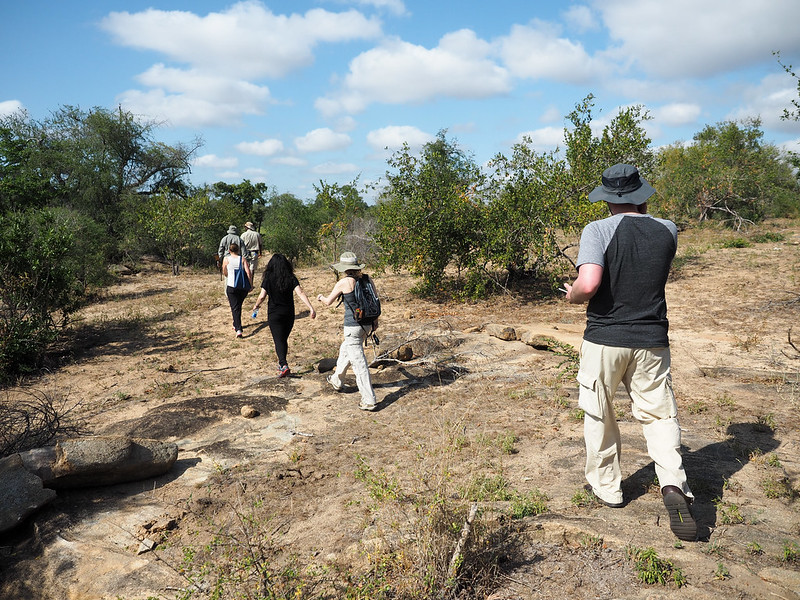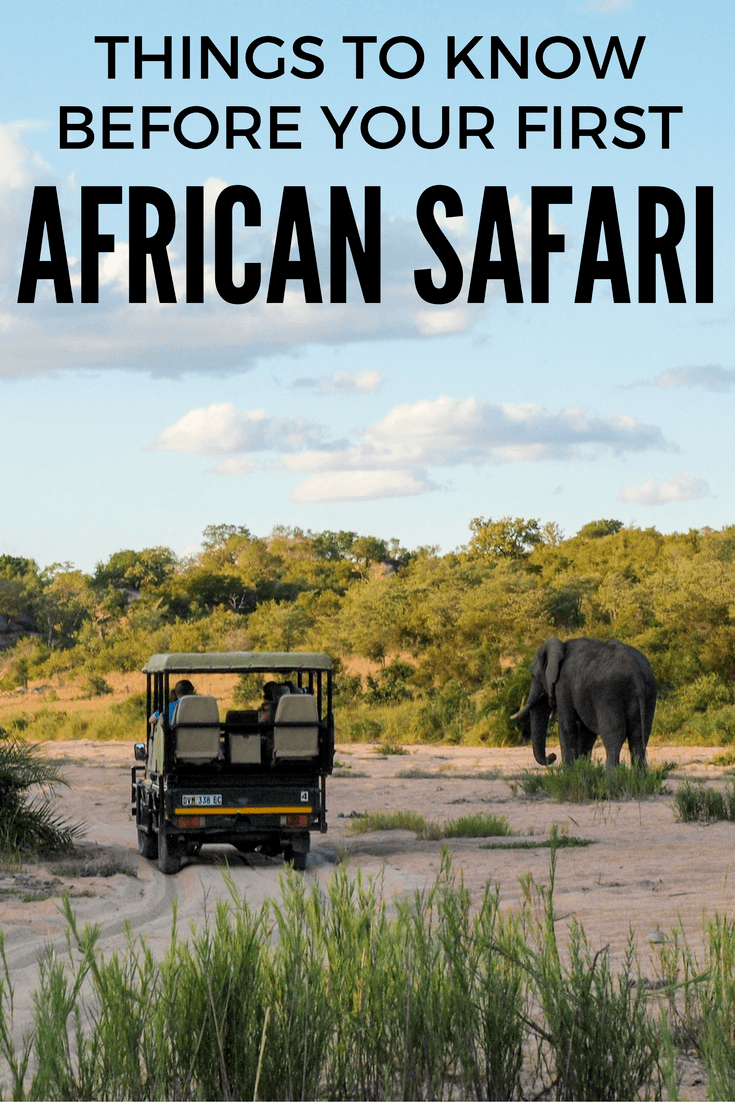8 Things to Know Before Your First African Safari

Ever since I was a little kid flipping through the pages of my Zoobooks, I knew that someday I wanted to travel to Africa and go on a safari. I wanted to see wild lions and herds of zebra and big-eared elephants – probably not much different than what many of you have dreamed of.
And after finally getting to do all of that (more than once), I can tell you that going on safari is just as amazing as you've probably always imagined. In fact, I think it's even better in real life!
The private game drive is what most people think of when they think “safari,” but there are actually so many different options!
My first safari experience was in South Africa with my dad, where we went on 2 private game drives per day in Kruger National Park. I then traveled overland with Acacia Africa and went on self-drive game drives in Etosha National Park in Namibia, a walking safari in the Okavango Delta, and both land and water-based game drives in Chobe National Park in Botswana.
I've also done small-group safaris in the Maasai Mara in Kenya, and private overnight safaris in Serengeti National Park and the Ngorongoro Crater in Tanzania.
Regardless of how you go on safari, though, I think there are some things worth knowing before you go.
What to expect on your first safari
Here are 8 things to know before your first safari:
1. You'll start early

Animals aren't really the same as people – they're most active right at first light and again around dusk. And this means that you can expect some very early starts to your safari game drives. In South Africa, our morning game drives would begin between 5:30 and 6 a.m., and then we would be back at the lodge around 9 a.m. for breakfast.
This timing was great because it meant we got to see the sunrise, as well as all the animals that are more active in the early morning hours. Even if you're not a morning person, force yourself to be one for those early game drives.
2. Every game drive is different
Thinking of skipping one of those early morning game drives in order to sleep in a little longer? Well don't! No two game drives will ever be the same since you're dealing with wild animals in a non-controlled environment. You won't ever see the exact same things if you go on multiple game drives.
Take the game drives I went on in Kruger National Park. On one drive, we saw a month-old baby rhino with its mother, and two male lions challenging each other over territory; on another we watched a huge herd of elephants playing in a riverbed, and then caught a pair of lions mating; and on another drive (our very last one in Kruger) we saw a pack of super-rare wild dogs challenging a group of hyenas.
And of course the more parks and protected areas you visit, the more opportunities you'll have for unique sightings. In Chobe, for example, we got to get up close to hippos safely in a boat, and even got to watch elephants swimming!
Even though you might be tempted to skip a game drive, using the excuse “well I've already been on a few” to justify a couple more hours of sleep or a nice sundowner drink at the bar, I would reconsider. You might miss the best sighting of your whole safari!
3. You're not guaranteed to see anything
Of course, there are no guarantees when it comes to safaris. After all, we're talking about wild animals in huge national parks here, most of the time without any fences or barriers to hamper their movements. While most animals do have a general territory that they stick to, it doesn't necessarily mean that you'll see them in it.
(For example, I was dying to see a big herd of zebra on safari, but we only spotted one lone zebra in Kruger. I had to wait to go to Etosha National Park in Namibia to finally see the zebra herds of my imagination.)
4. Where you stay matters
While it's true that you have the same chance of seeing animals in a national park as anyone else there, where you decide to stay definitely can have an affect on your overall safari experience.
In Kruger National Park, my dad and I stayed at the Jock Safari Lodge, which is a small private lodge right on the edge of the park. The rooms and food were amazing, the staff was so friendly, and many of the rooms have a view out over a riverbed – meaning you can see wildlife without going anywhere.
In Etosha National Park in Namibia, my overland group stayed at the Okaukuejo Rest Camp, which offers both campsites and more luxurious chalets. The highlight here was the watering hole right on the edge of the camp that was lit by floodlights after dark. We saw elephants, rhinos, giraffes, and more come to drink after dusk just a few steps away from where we were camping.
There are so many places to stay, regardless of your budget or how you're traveling. My advice is to choose a place that not only meets your accommodation needs, but that also will give you the chance to see wildlife from the lodge/camp itself. It's like bonus game drives!
5. Trust your ranger(s)
Don't get discouraged, though, if you've been out on a game drive for a while and haven't seen anything yet. The rangers who work in the parks (and especially for the private game lodges) are extremely good at what they do. They are also very good at communicating with other rangers in the area to find out where the best sightings are taking place.
At some lodges in Kruger, you'll go out on game drives with both a driver and a “spotter” to give you the best chance of seeing animals that blend in really well with the African bush. During my stay at the Jock Safari Lodge, though, we were assigned the head ranger for the duration of our stay, and he acted as both our driver and spotter the whole time.
We trusted him completely when it came to choosing routes through the park and deciding when to leave animals in peace. Our trust paid off, too – he put us in the right place at the right time to catch that pack of wild dogs (even HE was giddy over it since they're so rare in Kruger), and even piled us back into a vehicle after a game drive had ended in order to show us some leopards.
6. The animals aren't scared of trucks
You might be curious about how you can rumble around in a huge safari truck or a boat right alongside a bunch of hippos and not scare the animals away. And it's a good question!
But the answer is simple: Most of the animals that live safely within the boundaries of Africa's national parks have grown up seeing those safari vehicles. And since those vehicles have never done them harm, they simply see them as large, slightly noisy animals that don't pose a threat.
This is how you can roll up next to a sleeping pride of lions without waking them, or drive next to a huge elephant without scaring it away. (Conversely, if you approach an elephant on foot, it sees you as a threat and will likely run.)

This does mean, though, that when you're around predators or potentially dangerous larger animals, your ranger will tell you to keep very still and quiet and not hang any limbs outside the vehicle – because this can single you out as being separate from that innocuous “truck-animal” that most animals see.
7. There's no dress code
Contrary to popular belief, there's really no dress code when it comes to safari game drives. You don't have to wear head-to-toe khaki or anything like that. Because, again, remember that most animals don't see you as a person in a safari truck – they see the entire truck as a big animal.
The only time when you'll be asked to wear neutral, natural colors is if you're going on a walking safari. In that case, your ranger WILL tell you what you should and shouldn't wear so as not to spook or attract any animals.

A few things I *would* recommend, though:
- A mosquito jacket – There's very minimal risk of any mosquito-related diseases in Kruger National Park, but you may be at risk in some other parks in Africa. Just to be safe, I brought my ExOfficio BugsAway jacket with me, which is a mesh jacket infused with mosquito repellent. I wore this in the evenings at Kruger, a few times in Etosha National Park in Namibia, and near the water in the Okavango Delta and Chobe National Park in Botswana. (And I'm happy to report that I didn't get any mosquito bites!)
- A warm layer – I was in southern Africa in May and June, which is autumn/the beginning of winter in that part of the world. And it CAN (and does) get cold when the sun isn't out. You'll want a warm layer for early morning and late evening game drives. In Kruger, we were provided with blankets in our safari truck, but on my sunset cruise in Chobe we had to bring our own layers.
- Sun protection – Lastly, you can always get sunburnt, even in the winter months. Be sure to be prepped with sunglasses and sunscreen, and some long sleeves and pants if you're likely going to be in full-sun.
8. You'll want a good zoom lens
Chances are if you're going on safari you want to get some great wildlife shots to take home and show off. In order to do this, you'll need a decent camera and a long telephoto lens. While you will sometimes get really close to animals, you're more likely to see them from a short distance away for everyone's safety and comfort.
On my first safaris, I had an Olympus OM-D E-M5 Mark II camera before going on safari, and purchased a telephoto lens (the Olympus MSC ED-M 75 to 300mm II f4.8-6.7 Zoom Lens) before I left. This was SUCH a good investment, as most of my safari photos were taken on this lens.
On my second round of safaris, I had upgraded to a Sony A7iii camera, which has much more expensive lenses. So I actually rented a big 100-600mm lens for that trip!

(You can, of course, use whatever camera you have if photography isn't really your thing. Most people in my tour group just used their smartphones for photos. But if you are into photography, definitely invest in a decent telephoto lens – I honestly think you'll regret it otherwise.)
RELATED: 6 of the Best Places to Go on Safari in Africa
If a safari is something on your bucket list, don't put it off! Southern Africa especially is very safe right now, and a strong US dollar means you can get a lot for your money.
Check out more safari posts on my site:
- East Africa Highlights: Kenya and Tanzania with Rock My Adventure
- Overlanding in Southern Africa: Everything You Need to Know
- A Big 5 Safari in Kruger National Park
- The Private Game Lodge Experience in Kruger National Park
- What to Pack for an Overland Trip in Africa
Is an African safari on YOUR bucket list? Are there any other tips you would give to first-timers?


Amanda Williams is the award-winning blogger behind A Dangerous Business Travel Blog. She has traveled to more than 60 countries on 6 continents from her home base in Ohio, specializing in experiential and thoughtful travel through the US, Europe, and rest of the world. Amanda only shares tips based on her personal experiences and places she's actually traveled!
























Thank you so much for sharing this! An African Safari is high on my wish list. I would love to go, but I really don’t know where to start. I’m feeling more encouraged now!
Regards
Fiona
It’s certainly a bucket-list item! I did my first safari in South Africa, and found it a great place to start!
We’re leaving for Egypt and South Africa next month, and I just bought this camera to prepare! I’ll try to find a used version of the lens you recommended. Question–how did it perform in low light, and did you bring a tripod?
Thanks!
I got the cheapest 300mm lens available (there’s a way more expensive version, but it didn’t make sense for me since I knew I wouldn’t use it that often). I didn’t use it a lot in low-light, though I did take some video on it in the dark when our ranger used a spotlight, and it worked fine for that. I also did not take a tripod with me, because you won’t be able to use one in a safari truck anyway.
I’m looking forward to my first safari next year. We’re pretty sure we’re going to go on a South African safari. My question is about the early mornings. I’m not naturally a morning person, but then I’m also traveling from the western United States so I’m thinking the jet lag will help make it easier to force my schedule to adjust….
That will help. And also remember that there won’t be a lot to do after dinner on most nights, so it’s easy to get to bed early in order to prep for those early mornings! 🙂
[…] 8 things you need to know before your first African safari A Dangerous Business My 2016 goals: How did I do? Never Ending Footsteps […]
Amanda, i am humbled at your effort in showing what we have around here in Africa. You can think of these lands as raw and uncut. For instance Tsavo East National park has a land mass of 5,308 mi² while Tsavo west has 3,500 mi² these are huge landmasses that have nothing but game, caravans, camps and lodges. The Elephants here are red in color while you will find those in Meru national park taking grey color. This is nothing to do with genetics. When you come around we will tell you why. The zebras are found along the Mombasa- Nairobi highway closing freely. The elephants can be spotted along the road especially during dry spells. Now, the Kenyan standard gauge railway line passes through the pack with an elevated bridge that allows an aerial view of the park. Remember to take the train when you arrive here.
Great post! We are heading into Kruger in the Sabi Sands region in October. We are beyond excited, I’m not even sure we’ll be able to sleep before the first morning game drive. We love hearing about how amazing these experiences are!
You will have such an amazing time!
An African Safari is absolutely a bucket list worthy adventure. I bet it’s life-changing to see those beautiful animals in their natural homes and up close.
It’s definitely an experience I’ll never forget!